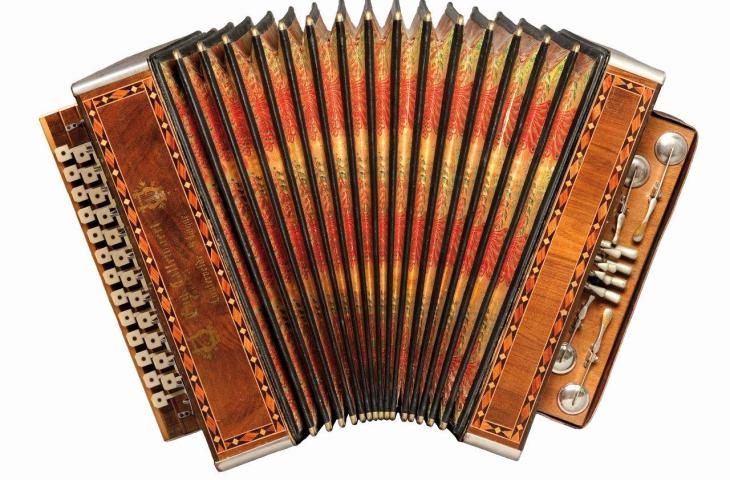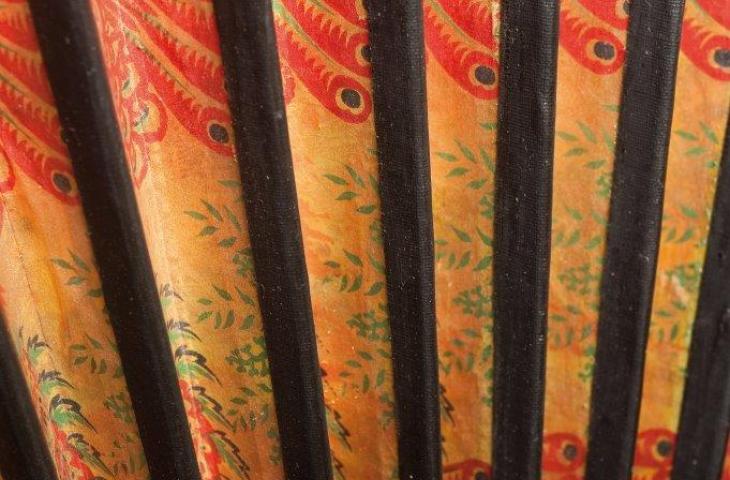Bisonoric accordion

Bisonoric accordion, Eugène Callewaert, Lichtervelde, West Flanders, 1928, inv. 1993.009
Bisonoric accordion

Bisonoric accordion, Eugène Callewaert, Lichtervelde, West Flanders, 1928, inv. 1993.009
The accordion originated around 1830 and is consequently a young instrument. The history of the accordion in Flanders began around 1880 with the establishment of the first accordion workshop by Felix Callewaert in the West Flemish Zwevezele. In 1890, he relocated to Lichtervelde. Eugène Callewaert, Felix’s son, worked in the workshop headed by his father and succeeded him on the latter’s death in 1918. At its peak, the firm employed six people, who produced six to seven instruments a week. Initially, German accordion parts were assembled, but the workshop later switched to manufacturing the various parts itself. The Lichtervelde became an epitome and was much sought after both in Flanders and among the Flemish in Detroit and elsewhere in America and Canada. The Callewaerts produced models in all price ranges, both de luxe models for professional musicians and simple instruments for the average player. The instrument portrayed is already fairly sophisticated. It has a three-row keyboard for the treble and fourteen bass/chord spoon keys. It is also bisonoric, meaning that each key corresponds with two different tones or chords, in accordance with the inward or outward movement of the bellows.